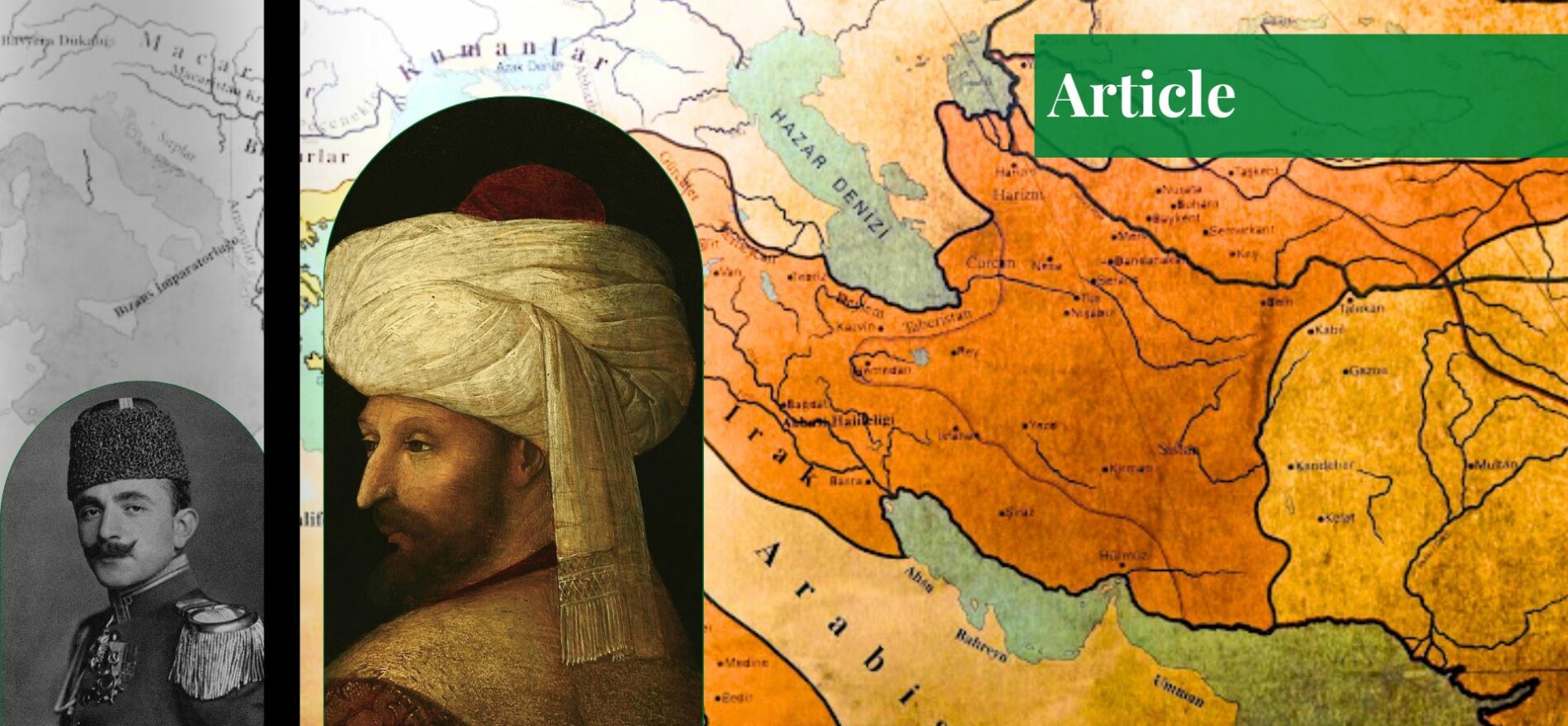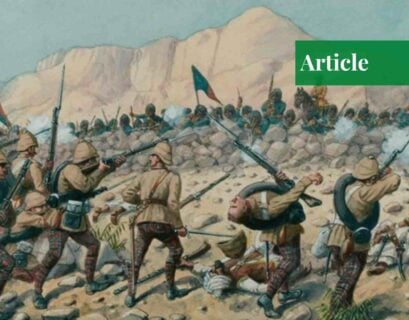The current international system is a result of years of political development. What we see right now i.e., the Westphalian system, became a part of the international political fabric after years of struggle. As religion was separated from politics, the European region brought forward a system that treated religion as a social contour of society. With that, the entire world experienced a wave of this non-religious political order, and the states or empires which relied on religion began to be treated as outdated for the new world order that was strictly dominated by European values.
These European values began to seep into other societies as well even that of the Ottoman Empire, leading to revolutions. With growing foreign influences and international wars, the Ottoman Empire began to grow weak in the 20th century and eventually collapsed in 1920.
The Young Turk Revolution
The Young Turk Revolution started in 1908 and was a political revolution that called for the enforcement of a constitution in order to manage the affairs of the state. The revolution was led by the Committee of Union and Progress whose objective was mainly the restoration of the 1876 constitution to promote a multi-party system in the Ottoman parliament.

The Young Turks pressed for such a system to ensure representation which would have prevented inter-communal tensions that had risen among the many ethnicities of the empire. A direct threat to the prestige of the empire, the Young Turk Revolution was one of the political forces that impacted public opinion. Enver Pasha, one of the close associates of Sultan Abdul Hamid, was also involved and he eventually fled the country as the empire dissolved.
Balkan Wars
From the year 1911, certain events began to transpire in the European hemisphere that led to an escalation in the region. The Ottoman Empire suffered greatly when the Balkan League composed of Serbia, Montenegro, Greece, and Bulgaria allied themselves and declared war on the Ottomans in 1912. The aim was to retrieve the European territory that the Empire had taken over. The Balkan armies successfully defeated the Ottoman armies and a peace treaty was signed, with the territories including Albania having been given independence.
World War I
At the beginning of World War I, the Ottoman Empire was faced with the question of a side that it needed to pick. The Ottomans went ahead and signed a secret treaty with Germany against Russia on 30th July, 1914. The empire marked its entry by sending two naval ships to the Black Sea Raid in October, but the plan failed. Russia soon declared war on the Empire and, in turn, the Empire declared war on Britain, France, and Russia on 11th November.
The major loss to the Ottoman Empire occurred at the Sinai Campaign in 1918 where the government surrendered to the Allied forces. With 975,000 casualties, the empire came to its knees and had no choice but to accept the fate the Allies had set for it (Beck, 2021).
The Case of the Armenians
Another major mishandling of public affairs that created a social catastrophe leading to the fall of the Ottoman Empire was the Armenian genocide. The genocide began as a campaign of deportation and mass killings of the Armenian subjects by the Young Turk government during the period of the war.
The government never took responsibility for the massacre of the ethnic population and called the Armenians rebellions that had put the peace of the state at cost. In order to deal with them, the government, to which it admitted, deported the hostile elements for the safety of the empire. However, historians do not accept it as the only reality and blame the Empire for this targeted killing.
A Wave of Arab Nationalism
As the Ottoman Empire entered WWI, Arab nationalism was waiting for it in the administering regions. In 1914, the tribes in the Arabian interior headed by Abdul Aziz ibn Saud had an alliance with the Wahabi Islamist movement that openly condemned the Ottoman government of being non-Islamic. It accused the empire of enforcing a pan-Turkic national agenda that led to tensions among Syrian, Palestinian, and Mesopotamian subjects. These groups, on the basis of their Arab identity, exploited the opportunity of war and began to showcase a resistance to the idea of Enver Pasha and Young Turks.
The Fall of the Ottoman Empire 1918-20
The fall of the Ottoman Empire took place with the occupation of Constantinople as the Armistice of Mudros was signed. The Armistice was to end the Ottoman participation in World War I. The 1920 Treaty of Sevres aimed to solidify the British and French control over the financial matters of the states that were liberated.
In this unfortunate collapse, Mustafa Kemal Ataturk took charge of what was left and led a resistance against the treaty that dissected the empire bit by bit. He started a nationalist movement of his own and the territory of Constantinople and Smyrna became grounds for it. Ataturk eventually succeeded in his efforts and formed the Turkish Republic, becoming the father of modern Turkey in 1920.
What Happened After?
After World War I, the fall of the once-prosperous Ottoman Empire gave way to a new age of colonialism-induced divides. The events that happened in that decisive decennium gave rise to European imperial rule in the Middle East, demarcations of the borders and its issues, and the emergence of new states, among others. Three important players emerged with the onset of the twentieth century: France, Britain, and local political actors such as the Hashemite, Ibn Saud clan, Reza Pahlavi, and Kemal Ataturk. The demise of the Ottoman Empire resulted in a power vacuum and these actors tried to attain more power.

The British wanted to obtain access to India through the Suez Canal, and they wanted to fulfill their fuel requirement from the Middle East. Moreover, French interests were related to prestige as they wanted to increase their sphere of influence with respect to other colonial powers in the region. Thus a marriage of convenience took place between France, British, and other local actors, with several agreements resulting from it including the Balfour Declaration, the Sykes-Picot agreement, the Entente Cordiale, and the Hussein McMahon correspondence.
The Sharif of Mecca, Hussein, had an enormous interest in forming a greater Arab state extending from the Iranian border to the Mediterranean Sea. To achieve this, Hussein colluded with the British and incited a revolt against the Ottomans within the region which eventually led to the death and subsequent fracturing of the Ottoman Empire.
Hussein took this opportunity to solidify his control over the region by sending his sons to Syria and Jordan to establish Hashemite control over the region. However, their efforts were not successful and soon the short-lived Hashemite dynasty found itself expelled from Hijaz by a revolt led by the Saud clan, and from Syria by French forces taking control, with only Jordan remaining under their influence.
France took control of Greater Syria, which included Lebanon, with some portions of northern Iraq and Turkey. According to the terms of the agreement, Britain wanted to expand its influence over the Arabian Peninsula, Iraq, and Transjordan; even the internationalization of Palestine had been promised. Anatolia had to come under the influence of Italy and Istanbul had been promised to the Soviet Union.
The British occupied Egypt in 1882 and wanted to expand its control over Suez Canal. They maintained their mandate system in Egypt, but riots against the British emerged in 1919. Consequently, British control over Egypt because of the strategic importance of controlling the Suez Canal turned extremely costly. So, they gave partial independence to Egypt on 28 February, 1921 but under some conditions such as influence and control over Sudan, domestic and foreign policies of Egypt, and control over the Suez Canal. Moreover, France annexed Algeria in 1830, Morocco in 1912, and Tunisia in 1881.
The Ottoman dynasty had ended and the British and France remained the most powerful actors in the region. France established its mandate system in Syria and Lebanon, while British continued its mandate system in Iraq and Palestine. Kingdom of Hijaz and Iran remained independent in the region of the Middle East.
Kemal Ataturk introduced many reforms including the national identity of Turkish citizens, nationalism, state engineering, and economic reforms and development in Turkey. The Ibn Saud Clan whose head, Abdel Aziz, was a desert warrior had been aided by the British. Hussein’s efforts were not successful and soon the short-lived Hashemite dynasty found itself expelled from Hijaz by a revolt led by the Saud clan. Later on, the name of the Kingdom of Hijaz and Nejd was replaced by the Kingdom of Saudi Arabia.
The map of the post-war Middle East was redrawn, and many new states emerged in the Middle East such as Syria, Iraq, Jordan, etcetera. Some of the states that emerged at that time gained independence including Turkey, Saudi Arabia, and Iran, while many states remained under British control until the late 1940s. However, the process of state building which started at that time continued till the 1950s and 1960s.
If you want to submit your articles, research papers, and book reviews, please check the Submissions page.
The views and opinions expressed in this article/paper are the author’s own and do not necessarily reflect the editorial position of Paradigm Shift.




















